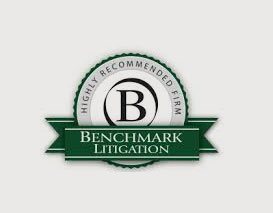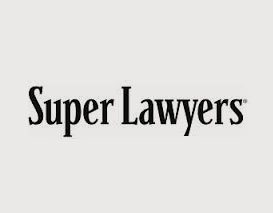Breach of Fiduciary Duty: Issues of Fact and The Continuous Wrong Doctrine
Print Article- Posted on: Nov 10 2025
By: Jeffrey M. Haber
In today’s article, we examine Hofman v. Braun, 2025 N.Y. Slip Op. 34102(U) (Sup. Ct., N.Y. County Oct. 24, 2025) (here), a case addressing the statute of limitations for a breach of fiduciary duty claim and the continuous wrong doctrine.[1] In Hofman, plaintiffs alleged that defendant, Seymour Braun, their attorney, initially represented them in forming limited liability companies and negotiating a loan, then engaged in actions adverse to their interests—such as foreclosing on escrowed membership interests and transferring property—spanning from 2017 through 2022. Defendants sought dismissal, arguing the claims were time-barred and lacked causation. The motion court held that factual disputes about ongoing representation and adverse acts precluded dismissal, as the continuous wrong doctrine could toll the statute of limitations. Also, the motion court found that plaintiffs stated a claim for fiduciary breach.
Plaintiff, Rafael Hofman (“Hofman”), was the former business partner of non-party Yakov Kleiner (“Kleiner”). Beginning in 2000, Hofman and Kleiner received legal services from defendant, Seymour Braun (“Seymour”), through his firm, defendant Braun & Goldberg.
In 2013, Seymour helped Hofman and Kleiner purchase seven properties and form seven limited liability companies to own each of the purchased properties. Defendant BCD USA LLC (“BCD USA”) was formed as a holding company for the seven limited liability companies. One of the seven limited liability companies is Defendant, BCD Edgewater LLC (“BCD Edgewater”), which owned a property in Florida. Non-party Moshe Goldshmidt (“Goldshmidt”) was Hofman and Kleiner’s nominee to own the companies because Hoffman and Kleiner lived abroad in Israel.
The funds for the property purchases came from Hofman, Kleiner, Israeli investors, and a loan from defendant Lexington Holdings LLC (“Lexington”) (the “Lexington Loan”). Braun & Goldberg allegedly represented Hofman and Kleiner with respect to, among other things, negotiating the Lexington Loan and negotiating a 2015 amendment to the loan. The Lexington Loan required 100% of the membership interests in the limited liability companies to be put in an escrow account managed by Seymour, and upon default, the membership interests would be transferred to Lexington.
In 2017, Seymour’s son sued Hofman, Kleiner, and Goldschmidt, claiming he was the true owner of the limited liability companies. Litigation continued through 2019.
In 2019, Lexington, through Seymour, foreclosed on the escrow and transferred the membership interests in BCD Edgewater to Lexington. On October 27, 2021, Lexington transferred BCD Edgewater’s property to non-party EL2 Development LLC (“EL2”).
In 2021, EL2 started a quiet title action against plaintiffs. In 2022, in connection with the quiet title action, Seymour allegedly admitted in an affidavit that he is Lexington’s manager.
Plaintiffs commenced the lawsuit by filing a summons on October 22, 2024, followed by a complaint on December 25, 2024. Plaintiffs alleged breach of fiduciary duty, aiding and abetting a breach of fiduciary duty, fraud, aiding and abetting fraud, and conspiracy to commit fraud and breach of fiduciary duty. Defendants responded with a pre-answer motion to dismiss.
The motion court granted in part and denied in part the motion. We examine the court’s decision with respect to the breach of fiduciary duty claim.[2]
Defendants proffered two arguments in support of dismissing these claims. First, defendants argued the claims were time-barred, and second, plaintiffs failed to allege proximate cause. As to the first argument, the issue for the motion court turned on the application of the continuing wrong doctrine. Defendants argued that the doctrine was inapplicable because the three-year statute of limitations had run.
The motion court found that there were issues of fact as to the application of the continuing wrong doctrine.[3] The motion court explained that “[a]lthough Defendants dispute[d that] Seymour and Braun & Goldberg … represented Plaintiffs,” resolution of that issue could not “be resolved on a pre-answer motion to dismiss.”[4] The motion court noted that there were numerous allegations of continuous wrongs that spanned the period 2017 through 2022, which, if true, would extend the statute of limitations:
Defendants allege Seymour and Braun & Goldberg represented them in 2013 to arrange a loan and to structure multiple limited liability companies and represented them again in 2015 to negotiate an amendment to the loan agreement. There are legal invoices sent to Plaintiffs from Seymour and Braun & Goldberg substantiating these allegations …. Moreover, Seymour and Braun & Goldberg continued to serve as escrow agent, and allegedly, his son sued Plaintiffs in 2017 regarding ownership of the limited liability companies formed.
Then, allegedly in 2018, Seymour, through Guillermo, sent a demand letter for payment on the loan to Goldschmidt, even though Seymour allegedly knew that Goldschmidt was not speaking with [Plaintiff] and thus [Plaintiff] would not be able to respond. One year later, in 2019, Seymour allegedly transferred the membership interests in escrow to Lexington, and then in 2021, Lexington transferred property held by BCD Edgewater to EL2, a limited liability company allegedly managed by a close associate of Seymour. EL2 then initiated a quiet title action against Plaintiffs based on that transfer, where, in 2022, Seymour allegedly submitted an affidavit in support of EL2 where he purportedly stated he is the manager of Lexington.[5]
“Because the Complaint allege[d] acts from 2017 through 2022 perpetrated by Seymour or his alleged agents that were directly adverse to or intended to deceive Plaintiffs,” said the motion court, “there remain issues of fact as to whether the continuous wrong doctrine extends the statute of limitations.”[6]
Having found issues of fact as to whether the statute of limitations was tolled, the motion court addressed whether plaintiffs stated a claim for breach of fiduciary duty. The motion court concluded that plaintiffs had done so: “[a]ccepting as true the allegation that Seymour represented Plaintiffs in the negotiation over the loan and in forming the limited liability companies, Seymour’s later alleged actions, which were directly adverse to Plaintiffs and allegedly in furtherance of a goal to obtain ultimately the various purchased properties, give rise to a breach of fiduciary duty claim.”[7]
Takeaway
In New York, there is no single statute of limitations governing breach of fiduciary duty claims. “Rather, the choice of the applicable limitations period depends on the substantive remedy that the plaintiff seeks.”[8] “Where the remedy sought is purely monetary in nature, courts construe the suit as alleging ‘injury to property’ within the meaning of CPLR 214 (4), which has a three-year limitations period.”[9] “Where, however, the relief sought is equitable in nature, the six-year limitations period of CPLR 213 (1) applies.”[10] Moreover, “where an allegation of fraud is essential to a breach of fiduciary duty claim, courts have applied a six-year statute of limitations under CPLR 213 (8).”[11]
The initial burden of establishing that the limitations period bars the challenged claim is on the movant.[12] “To meet its burden, the defendant must establish, inter alia, when the plaintiff’s cause of action accrued.”[13] “A breach of fiduciary duty claim accrues where the fiduciary openly repudiates his or her obligation – i.e., once damages are sustained.”[14] This is so because, “absent either repudiation or removal, the aggrieved part[y] [is] entitled to assume that the fiduciary would perform his or her fiduciary responsibilities.”[15] “Open repudiation requires proof of a repudiation by the fiduciary which is clear and made known to the beneficiaries.”[16] “Where there is any doubt on the record as to the conclusive applicability of a [s]tatute of [l]imitations defense, the motion to dismiss the proceeding should be denied, and the proceeding should go forward.”[17]
As with many rules, there is an exception – the continuing wrong doctrine. Under the doctrine, the statute of limitations is tolled “where there is a series of independent, distinct wrongs rather than a single wrong that has continuing effects.”[18]
In Hofman, the motion court found issues of fact regarding whether acts from 2017 through 2022—such as litigation, property transfers, and affidavits—were part of a continuing wrong. As such, the motion court declined to dismiss the breach of fiduciary duty claim at the motion stage.
______________________________
Jeffrey M. Haber is a partner and co-founder of Freiberger Haber LLP. This article is for informational purposes and is not intended to be and should not be taken as legal advice.
[1] We examined this issue in numerous articles, including: Breach of Fiduciary Duty: Time Bars, Tolling and the Continuing Wrong Doctrine. To find additional articles related to the statute of limitations for breach of fiduciary duty claims, when that claim accrues, and the application of the continuous wrong doctrine, visit the “Blog” tile on our website and enter the search terms “breach of fiduciary duty,” “accrual,” “statute of limitations”, “continuing wrong”, or any other related search term in the “search” box.
[2] The motion court dismissed the fraud claim because plaintiffs did not oppose the motion with respect to that claim. Slip Op. at *3, citing Saidin v Negron, 136 A.D.3d 458 (1st Dept. 2016).
[3] Slip Op. at *4.
[4] Id.
[5] Id. (citation to record omitted).
[6] Id. at *5, citing CWCapital Cobalt VR Ltd. v. CWCapital Investments LLC, 195 A.D.3d 12, 18 (1st Dept. 2021) (citing Matter of Yin Shin Leung Charitable Found. v. Seng, 177 A.D.3d 463 (1st Dept. 2019)); Ganzi v. Ganzi, 183 A.D.3d 433, 434-35 (1st Dept. 2020).
[7] Id., citing Palmeri v. Wilkie Farr & Gallagher LLP, 156 A.D.3d 564, 568 (1st Dept. 2017).
[8] IDT Corp. v. Morgan Stanley Dean Witter & Co., 12 N.Y.3d 132, 139 (2009) (citations omitted).
[9] Id.; see also VA Mgt., LP v. Estate of Valvani, 192 A.D.3d 615, 615 (1st Dept. 2021).
[10] Id.
[11] Id.
[12] Lebedev v. Blavatnik, 144 A.D.3d 24, 28 (1st Dept. 2016) (internal quotation marks and citations omitted).
[13] Id.
[14] Id. Importantly, “[t]o determine timeliness, [the court] consider[s] whether [the] plaintiff’s complaint must, as a matter of law, be read to allege damages suffered so early as to render the claim time-barred.” IDT, 12 N.Y.3d at 140.
[15] Matter of George, 194 A.D.3d 1290, 1293 (3d Dept. 2021) (internal quotation marks, brackets, and citation omitted).
[16] Matter of Steinberg, 183 A.D.3d 1067, 1071 (3d Dept. 2020) (internal quotation marks and citations omitted).
[17] Matter of Behr, 191 A.D.2d 431, 431 (2d Dept. 1993) (internal citations omitted); see Matter of Steinberg, 183 A.D.3d at 1071.
[18] Ganzi, supra.
Tagged with: Breach of Fiduciary Duty, Business Litigation, Continuing Wrong Doctrine, Statute of Limitations





